Labeled as Ireland’s “Heritage Pony,” the Kerry Bog Pony breed holds a great deal of importance to the Irish Equine Community. Since their origin stories, this pony has significantly advanced the methodology and efficiency of agriculture and transportation, by providing the necessary force needed to plough and travel across the Kerry bogs, which are harsh marshlands.
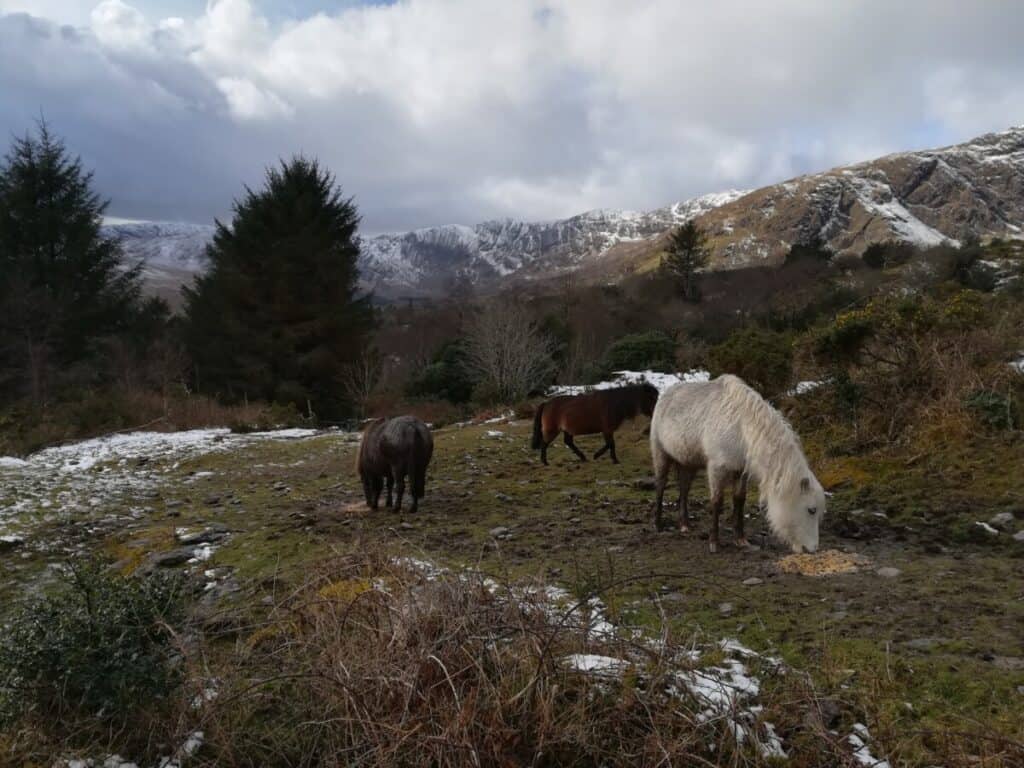
Built like small freight trains, these ponies’ strong and durable conformations allowed them to pull farming equipment through less-than forgiving lands. While their conformation is enough to praise this breed in all their glory, the pony also displays a disposition similar to that of a teddy bear. With a kind and patient mind, the pony makes for the perfect family addition, especially around children.
A pony that has contributed this much to the community certainty deserves some recognition, a fact which was heavily influenced by their brush with extinction in the 1980s. Since then, several associations and supporters have rallied together to ensure the enjoyment of the Kerry Bog Pony for generations to come. So what is it that makes this pony so valued in the Irish community? Let’s find out.
The Kerry Bog Pony A Brief History
Tracing the Kerry Bog Pony’s heritage and origins has proved difficult, leaving only theories of their ancestral linage and environmental beginnings. While researchers are not entirely sure how the pony came to live within the Kerry peat bogs, they originated from the moorlands.
The pony’s first documentation reflected that semi-feral herds were living throughout the Country Kerry during the 17th century. Still, considering their environmentally-adapted conformation, they had been residing there well before.
Many equine researchers believe that the pony links to the Irish Hobby’s now-extinct linage, based on their remarkably similar characteristics and work ability. Other theories suggest that the pony is a descendant of native British Ponies and Iberian Mountain Ponies that contain Celtic bloodlines. Following the military and trading routes between Ireland, Spain, and Portugal, many ponies with Celtic bloodlines native to Iberia were brought into Irish territory. The Iberian Ponies familiarly resemble the modern Kerry Bog Pony, with a composition of a short and sturdy build.
For the feral ponies within the marshlands of County Kerry, domestication began shortly after the 17th century, primarily used as pack animals. Due to the pony’s kind and compatible demeanor, their training process was quite simple and easily adapted to their newly domesticated lifestyle. The addition of necessary equipment, such as a saddle or harness, was found to be remarkably easy by the farmers and merchants. They would be used to transport kelp and peat to the markets for sale or hall heavy carts via a harness.
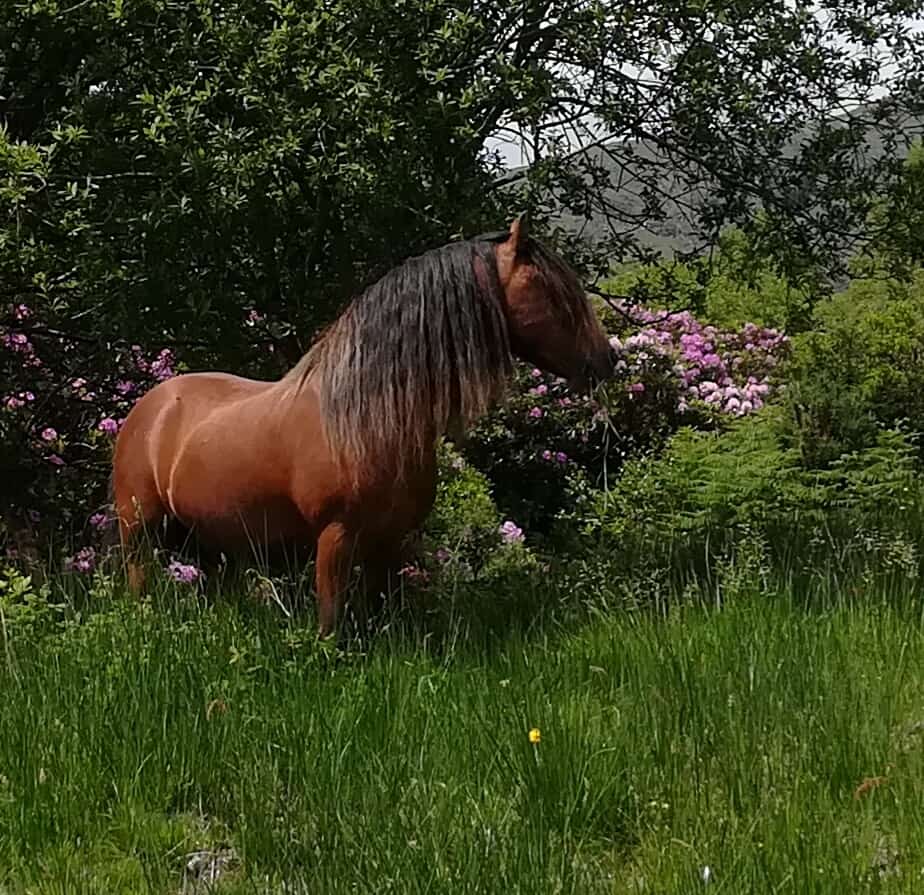
Their height-to-weight ratio made them perfect for travelling across the wetter marshlands, allowing farmers and merchants to deliver the necessary goods to essential trade routes. The pony’s ability to move quickly over the soft bogs along with their hoof structure, allowed them to cross diverse terrain from extreme marshlands to rocky foothills, causing little delays in the transportation of goods.
After a day of work done, farmers would let out the ponies out across the Irish heathlands for turnout. The ability to turn them out to open lands and once again catch them without hassle set the pony apart from other breeds in terms of practicality and even breeding practices. Due to the fact that they were released in large herds, the mares would often come back pregnant, a breeding system that existed for numerous centuries. As a result of this, farmers and barn managers did not have established breeding grounds for the KBP.
The Decline of the Kerry Bog Pony.
As the Kerry Bog Pony continued to show its unwavering devotion to the Irish community, their unparalleled usefulness soon became abused by British forces at the start of the 19th century. British cavalry forces had acquired word of the Kerry Bog Pony’s sturdy and equipped characteristics, seeking such attributes for their gain. At the time, the British cavalry faced the Peninsular War’s compiling pressures, lasting from 1807 to 1814. They required strong warhorses to assist Spain and Portugal in the conflicts with the French Empire. The Kerry Bog Pony had the perfect pedigree and build, promoting their use as pack animals throughout the war. Used to transport weapons, reinforcements, and food to soldiers during the conflict, many ponies did not return to Ireland. Thus, was the beginning of the pony’s unfortunate battle with extinction.
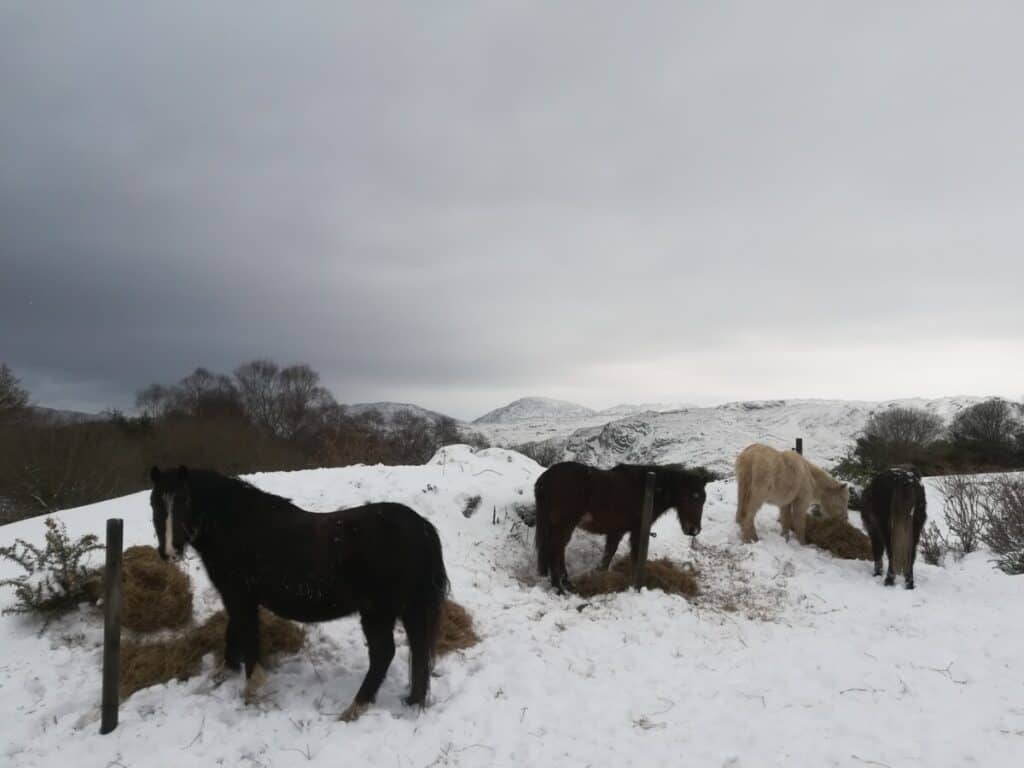
Although the war alone took a vast majority of the firm and courageous ponies, the Kerry Bog Pony had yet to The Decline of The Kerry Bog Pony face far worse. As their numbers already dwindled, re-population efforts were not what they once were. Then, devastation hit in the form of famine lasting from the years 1845 to 1852. During the famine, hundreds of farmers and merchants that utilized the ponies passed away or emigrated, leaving no one to train and care for them. Shortly after, Spanish donkeys were brought to the island, as their replacement pack animals. But as peat resources began to diminish, there was no longer a demand for such work animals, leaving the Kerry Bog Pony population’s remainder to fend for themselves in the heathlands.
By the 1850s, there was no longer any KBP working as a pack animal among the farms, as agricultural lands became consolidated. The ponies were subsequently replaced by large machinery and even larger draft horses. The rest of the ponies wandering the heathlands would sometimes even get shot down by locals for eating away their farmlands.
A Second Chance For The Kerry Bog Pony
The Kerry Bog Pony’s population would continue to decline for the next century, as it was assumed that they had reached complete extinction. This assumption maintained residency until one eager man named John Mulvihill set out to count the remaining ponies. Upon his research, Mulvihill came to find one stallion, allegedly named Flashy Fox, accompanied by 19 mares. To further his proof of KBP existence, he conducted a DNA typing project, to which he discovered that all the mares were, in fact, purebloods.
Mulvihill transported the ponies to his facilities where all the studies were conducted, and where he began his efforts to repopulate the breed in Ireland. Flashy Fox would soon father over 140 foals between 1995 and 2012, putting the breed back on the map. Mulvihill’s hand in the KBP’s re-emergence inspired a chain reaction within the Irish equine community, as more and more organizations and associations were born to protect the breed. Most notably, in 2002, the Kerry Bog Pony was awarded the title of the “Irish Heritage Pony” by the Irish Government, and shortly after, the Kerry Bog Pony Society was born. The pony’s growing popularity gained some considerable traction in American as well, as the first ponies were shipped from Ireland to the states.
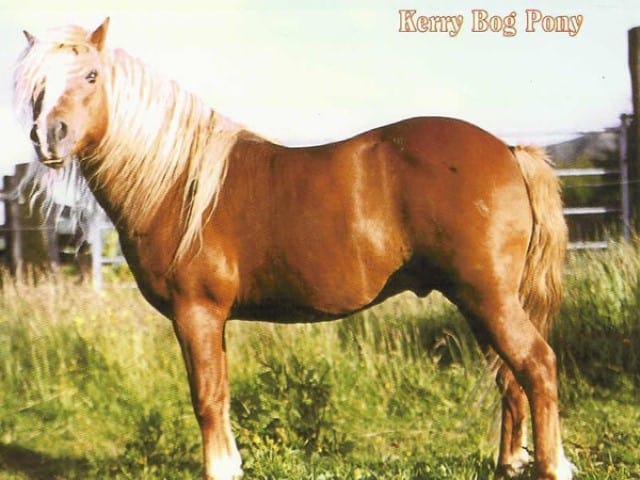
The American Kerry Bog Pony Society was founded just two years after their anticipated arrival. Once the word was out that the Kerry Bog Pony was back in business, awards and achievement certificates were flying in every direction. In 2005, the Irish Department of Agriculture and Food, in union with the European Commission, announced the pony as an official breed, receiving their first equine passport from the Irish Horse Board one year later.
Due to their unfavourable past, the pony became part of the Rural Environment Protection Scheme, which awarded those farmers using environmentally-conscious practices. Many highly-bred KBPs live their lives at the famous Kerry Bog Village, a museum along the Ring of Kerry that celebrates the pony’s history and the lands they originated from. Their re-emergence has since grown, with KBPs’ still inhabiting the beautiful farms and stables of Ireland and America. The pony’s population was last measured in 2011, with over 300 ponies registered with the Irish registry.
Characteristics of the Kerry Bog Pony
While the Kerry Bog Pony history is one that can never be forgotten in its extra ordinariness, it is not the only thing that sets this breed apart from others. These ponies contain a mixture of qualities that truly make them a remarkable pony.
The average KBP stands at approximately 12 hands high, with mares typically one hand shorter than the stallions. Unlike other pony breeds, who usually have a heavier set weight compared to their height, the KBP weighs significantly lighter, which allowed them to cross the wet marshlands with ease. Because of their weight-to-height ratio, this breed of pony is considerably athletic. Their athleticism comes from their ability to work long hours while carrying heavy carriages and carts, making them the perfect driving breed.
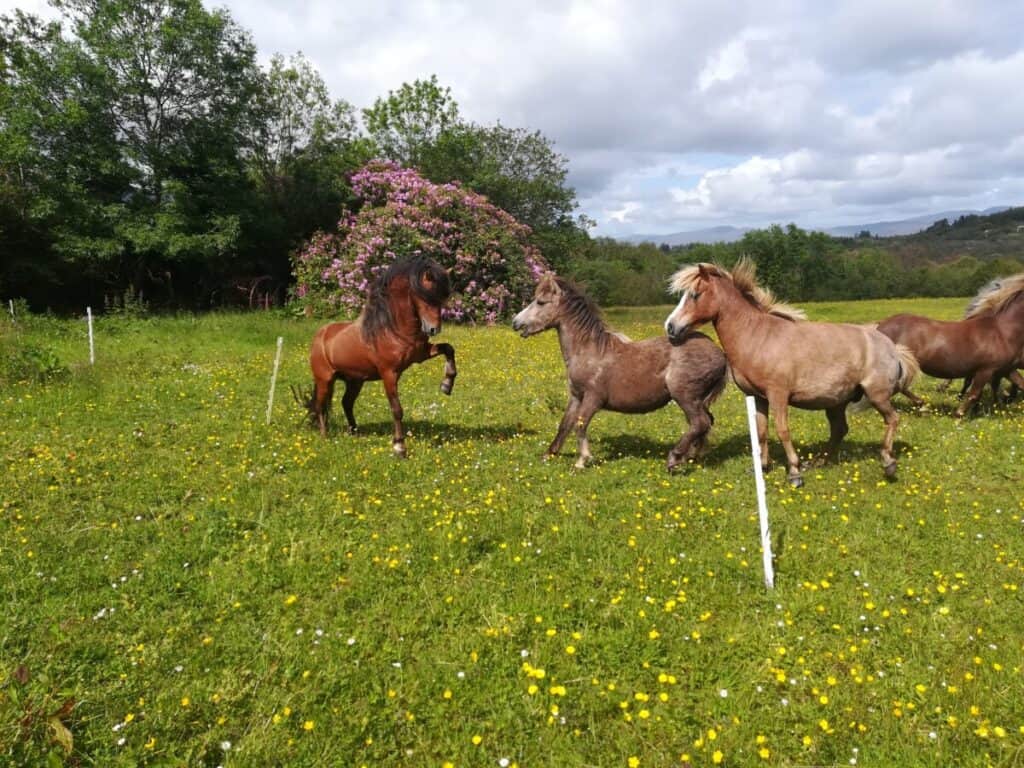
The KBP’s hind feet track outside of their front feet, allowing optimal weight distribution when exercising. Compositionally, the KBP stands strong and muscular in appearance. At the head, the pony has somewhat of a concave profile, with more enormous eyes and smaller ears than other breeds. Some can visualize many similarities in the head of a KBP to an Arabian and Morgan horse.
The Kerry Bog Pony makes for the perfect family addition due to their kind temperament and loyal nature. The pony is prided on their attributes of confidence, sensibility, and kind demeanour. As history has proven, the pony can be extremely reliable to humans, which is a quality many seek in a horse. But it should be noted that, while their loyalty is superior, the KBP originated from a feral-horse and can sometimes cause some trouble of their own. Due to their usually kind temperament, many KBPs’ have been used as therapy horses. In general terms, this pony is highly adaptable, making them a great addition to nearly any equestrian’s stable.
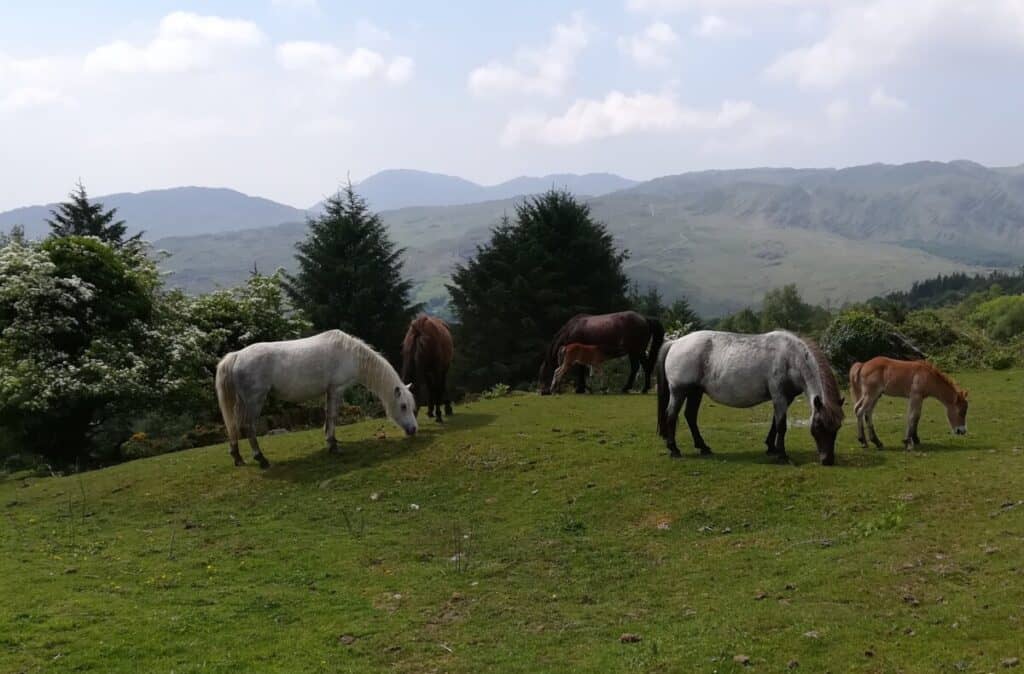
The Kerry Bog Pony can be found in many different coat colours, from a simple chestnut to a Palomino. While there are many different coat colours found throughout the KBP population, only solid colours are listed as permissible by the Irish breed registries. As a result, many of the modern ponies are either chestnut, black, bay, or gray in colouring.
The story of the Kerry Bog Pony is one that will go down in history, through their triumphs of extinction to their undeniable loving nature. To this day, the KBP is celebrated as a highly regarded breed as they remain protected by various associations and governmental organizations. In 2006, the breed was considered officially “rare.” While this may be true, efforts to eradicate this title are already well underway, bringing the KBP back to its original glory.
This Article By Jordan Bastian was Originally Published in the October 2020 Issue of Irish Sport Horse Magazine. All Pictures were Courtesy of the Kerry Bog Pony Society and are subject to Copyright.
